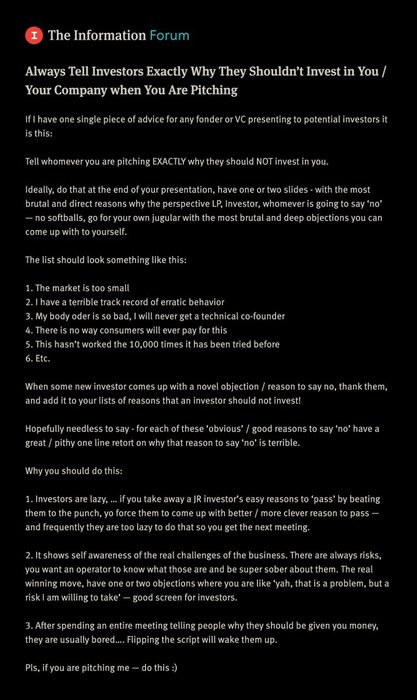Sublime
An inspiration engine for ideas

Apple • Gokul Rajaram on designing your product development process, when and how to hire your first PM, a playbook for hiring leaders, getting ahead in you career, how to get started...
Scott Baker
@bakerlink
The essential responsibilities of a leader/company exec, via DHH:
1. Chart the course
Where are we going? What are we building? Who is it for? Any executive running anything has to know the answer to these questions in order to lead anyone anywhere. If you don't have a clue where you're going, any road can take you there, and running in circles
... See moreFor these types of tests, the person who writes the code and understands it best is the one who is most qualified to test it.
Jason Arbon • How Google Tests Software
I observed that, sure, teams can reach high percentages of unit test coverage to check the box and meet the metric, only to find that a large percentage of those tests are flaky—metric was met, but value was not delivered. The best teams didn’t really need to care about metrics; they had purpose, discipline, pride, and responsibility—and the metric
... See moreRobert C. Martin • Clean Craftsmanship: Disciplines, Standards, and Ethics (Robert C. Martin Series)
Scott Belsky
Abie Cohen • 9 cards
Alexander Obenauer
alexanderobenauer.com
We start with just enough design to get the feedback cycles going: Features What do users want? Design How can programmers best be supported to deliver those features?